Per Bak Jensen's images seem wide-ranging and different. But if you take your time, a connected world opens up. Wenke Röschmann, an intern at Museum Kunst der Westküste, spoke with the artist - about what connects his work, his youth, and art that looks back.
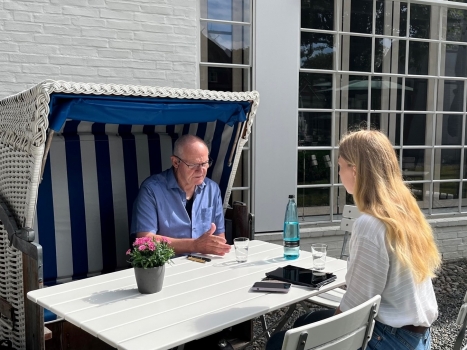
Let's start at the beginning. You were already taking photographs at the age of ten. Was there a point when you realised that you had found your life's purpose?
At that time I had no idea about anything. I was the only child in a family in Copenhagen, in a very poor area. That meant that - without siblings - I was very alone. But I was never lonely. I was just a child who wanted to go his own way. I had many friends, but I didn't have any close friends. When I went to school, that worked out well. But it was not my desire to have a school education. I was more interested in taking the train to the beach and just walking around and looking at things.
In my early books I wrote a lot myself, also about this feeling of being alone in the world and being comfortable with that and not needing this society. I don't need to be a pioneer. There are a lot of pioneers and a lot of people who want to be pioneers. We don't need another one.
Most of your photographs have specific titles. What is the process from work to title like?
Normally I don't take many pictures. I was on Föhr in March and took three pictures. That's the most pictures I've ever taken in four or five days.
I just walk around and see if anything is looking at me. I know it sounds crazy, but you can try it yourself and you'll find that things around you are looking at you. The world is looking at us because it is waiting for us to do something. I don't know what it is, but there is something that is around us. We can't see it, but we can feel it. And sometimes we can feel it very strongly. When I feel it very strongly, I take the photo.
After the photo is taken, I put it away and don't look at it again until about two or three weeks have passed.
To gain a little distance.
Yes, because when I wait a few weeks, I am a different person. I have developed by going backwards or forwards or in a completely different direction. Then I look for an entrance to the picture. Every picture has an entrance - that can be the first thing you see.
Let's say we have a photograph of a white table and there is a flower on the table. Then the dark spot on the white surface catches our eye. We would say that this flower in the black pot is the doorway to this photograph. And whatever the door is, the entrance, gives the photo its name. So it could be called Flowers, for example.
In that way, people can find access to the photograph.
Yes. Sometimes it works, but not all the time. Nothing works all the time. Then I just put the date or the place where the picture was taken as the title. If it's an iceberg, the name could be Iceberg. But it could also be West Coast of Greenland.
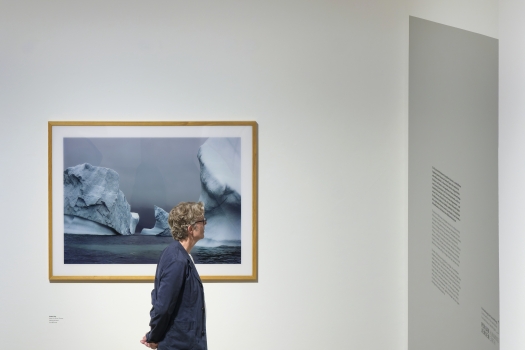
Per Bak Jensen, Disko Bay, 2007, © Galleri Bo Bjerggaard and the artist, VG Bild-Kunst, Bonn 2023, Foto: Lukas Spörl
Some people have seen many of my exhibitions and books and have added up the works. There are actually 500 different photographs with 500 different titles.
That's a lot of titles.
Yes, but it took me more than 60 years to create those 500. That's about eight photos a year.
In addition to your photographs, the exhibition also features poems by you. How are the two connected?
What I have written, whether for the walls or my catalogues, is what I feel when I go out to take photos. As humans, we have thoughts all the time. We are thinking. We think about where we are, what we feel and what we encounter in our lives.
Look at this tree, for example. It is so easy to teach yourself to see that it is a living being. A tree has green leaves that turn yellow after a while and fall off. After 200 years, the whole tree dies. It is something alive, but it is the same with a table, it also has a life.
Maybe this table comes from a tree and maybe this table - when it disappears - will not just disappear. It will become something else. That is the reason why I am talking about this. Everything around us is slowly disappearing, but at the same time everything is being reborn. And when you start seeing the trees like that, they will look back - the table will look back.
You will start to think about what the meaning of your life is. Why am I here? What am I supposed to do with my life? And if you can focus on that, then you have a friend in the trees and a friend in the tables, and you become a part of everything.
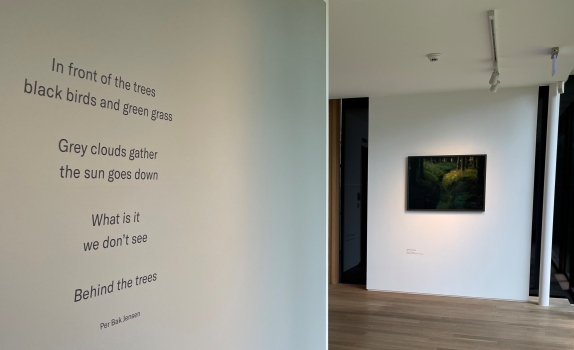
Per Bak Jensen, Drømmen / The Dream, 2012, © Galleri Bo Bjerggaard and the artist, VG Bild-Kunst, Bonn 2023, Foto: MKdW
It sounds as if these are the wisdoms of a meditation guy, but it has nothing to do with meditation. If people can find this path through meditation and attain this knowledge that way - fine by me. It doesn't matter. Because when you find it, it's not just something you like or something you prefer, it's something you will be.
One will be the way one thinks. If one thinks badly, one will be badly. If one thinks positively, one will be positive. It goes deeper than that, but when you think about all this, sometimes the words come to you. I don't know from where.
You taught at the Royal Danish Academy of Fine Arts in Copenhagen for a long time. How did the contact with students influence your art and your perception of it?
I was a teacher for about 30 years, so it was a long time. But I learned more from the students than they could have ever learned from me. The students have maybe, but only maybe, learned something about art and photography and technology. I, on the other hand, have learned something about myself. I am very grateful for the lessons I gave, because I saw another side of myself. I learned that I have a certain temper that can make me a different person, and I was able to see that that is not good. So I changed because I was taught by the students.
One can often read that you don't edit your photos, how come?
That's not quite true. You can do so many things with a photo. But what I usually do when I start working with a file is - today it's a digital file - I try to see if something is wrong with the colour. Then I select the automatic colour correction, but almost always it doesn't work. So I decide myself whether I want it cooler or warmer or change the contrast. Sometimes I also crop the photos a bit to have them in different shapes if they are hanging on the same wall. I also remove dust from a photo, of course.
But that's it. I never manipulate the pictures, then they would become fantastic, almost perfect.
But that's not the point.
No. Well, maybe it is a point for the people who do it. Then you have to ask them. But for my part, I don't want to stand on the top of the mountain [referring to the painting Wanderer above the Sea of Fog by Caspar David Friedrich], I'd rather be in the valley with the other people.
Of course, such works are also interesting for me to see because then I am more aware and clear about what I am not doing. Maybe that can make me stronger in my own way. So I am grateful that there is someone who does it differently than me.
There is obviously a big difference between your earlier photos, which you took in New York or Phoenix, for example, and today's landscape photographs. When did you start getting more involved with nature and how did that come about?
I understand what you're saying, but that's not how I work. I don't have a clear and distinct idea in my head. I didn't start with black and white photography at some point, then landscape photography, and then I moved on to colour photography and city views, and then back to landscapes.
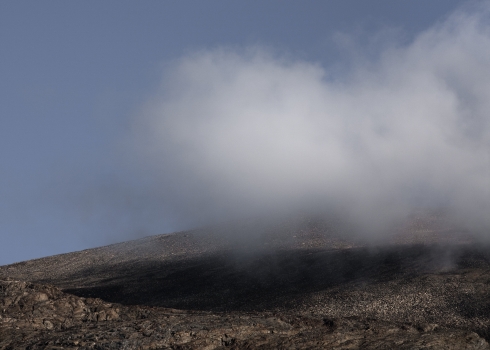
Per Bak Jensen, Skygge - Dickson ford, Shadow - Dickson ford, 2011, © Galleri Bo Bjerggaard and the artist, VG Bild-Kunst, Bonn 2023
I move backwards and forwards all the time. I'm sure there's a common thread in all my photographs - but no straight line emerged because I moved from one direction to another. I can still go out today and take black and white photographs, or photographs of a cityscape, seascape or any other kind of scape.
For me, something else is important, it's what looks back at me.
Thank you very much for taking the time.
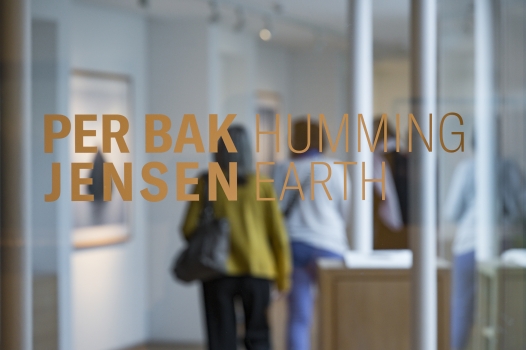
Exhibition Per Bak Jensen - Humming Earth, Foto: Lukas Spörl
